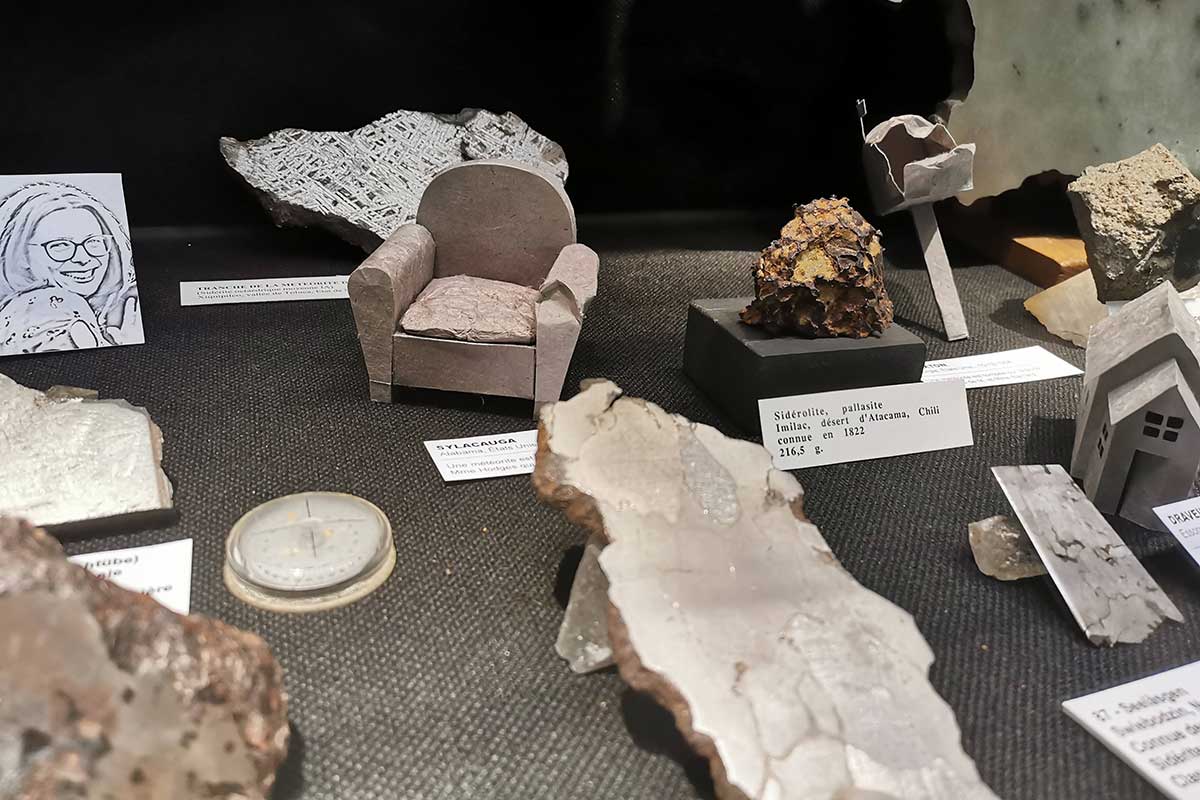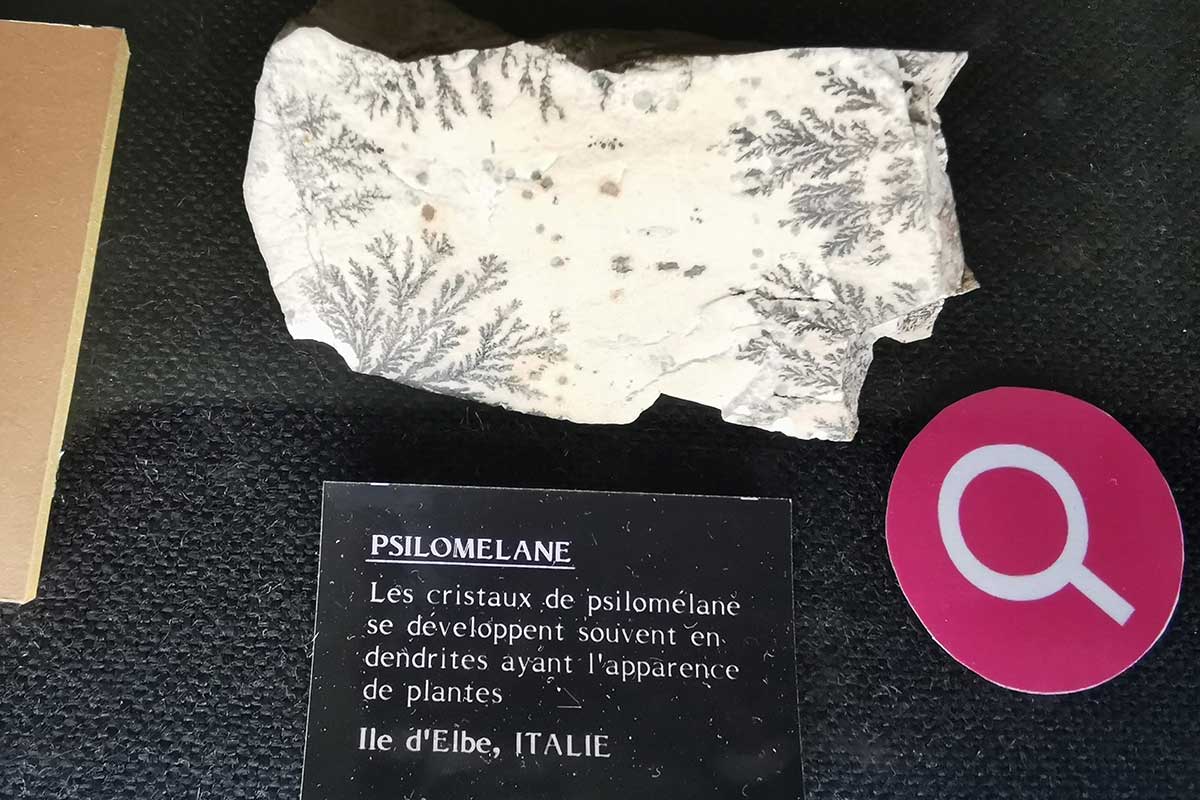Strasbourg hides a treasure that is relatively unknown to the general public: the Musée de Minéralogie. Tucked away in the former Imperial University, this museum takes visitors on a journey through time and space, from the depths of the earth to the farthest reaches of the universe.
During a school trip with my daughter, I had the opportunity to discover this fascinating place. Far from the modern, interactive museums to which we are accustomed, the Musée de Minéralogie, with its two halls full of display cases, may at first sight seem outdated. But make no mistake, this museum is a real goldmine for the curious and science enthusiasts. Let me take you on a tour.

The History of the Museum of Mineralogy in Strasbourg
Strasbourg's Museum of Mineralogy has a rich history dating back more than two centuries. The mineral collection was founded in 1762 by Johann Hermann, a Strasbourg medical professor with a passion for natural history. After his death in 1800, the City of Strasbourg transformed his cabinet into a museum, which was then incorporated into the scientific collections of the new Imperial University in 1880.
Since 1890, the museum has been housed in a historic University building at the heart of the campus. It is a place steeped in history, which has seen generations of students and researchers pass through its doors. The mineral collections, which today include 30,000 samples from all over the world, are considered a historical reference. They bear witness to the great discoveries in mineralogy and crystallography of the 19th century, and constitute the largest university collection in France.

Impressive mineral collections
The real jewel in the crown of the Musée de Minéralogie de Strasbourg is without doubt its collection. With 30,000 mineral samples from all over the world, the museum offers unrivalled diversity and richness. Each specimen has its own story, its own journey, from the depths of the earth to the museum display case. And some of these treasures are particularly remarkable.
The meteorite collection, for example, is the second largest in France, second only to that of the Muséum National d'Histoire Naturelle in Paris. With 450 samples, it offers a fascinating insight into the mysteries of the universe. Some of these meteorites were acquired around 1900 by the Imperial University, and the collection has been growing ever since.

But what really sets this museum apart is the variety of minerals on display. Rare or precious specimens such as Rhine gold, which is reminiscent of the BNU's magnificent collection of coins, deposits that have now been exhausted, minerals dating back to the 19th century... Each display case is an invitation to discover and marvel.

A surprising visit with children
During my visit, I was surprised by the richness of this museum. At first, when I saw the display cases lined up in a row, I was afraid I was going to see a succession of rather boring minerals. But in the end, you are quickly captivated by the collections, which take you on a journey to discover each of the most beautiful minerals. The museum also offers a number of very clear explanations (in French).
One of the rooms is devoted to minerals found in the Alsace region. There is also a wide range of equipment on display, including a photographic galvanometer used until 1952, a crystal cutting and polishing machine and microscopes.

As well as the display cases full of minerals and meteorites, I particularly enjoyed the activities for children. It captured their attention, and even that of the adults, by being both fun and instructive. The children carried out a real investigation in the main room, weighing the minerals, observing their magnetism, their appearance, their colour... My daughter loved this experience, and I have to admit that I did too.
Visiting the Musée de Minéralogie today
Today, Strasbourg's Museum of Mineralogy continues to fascinate visitors, whether professionals, science enthusiasts or simply the curious. It is open to the public every Wednesday afternoon, but also by appointment for groups and professionals. The museum also takes part in special events, such as the Nuit des Musées, giving a wider public the chance to discover its treasures.

The museum is also very active on social networks, where it regularly shares news and practical information. It's a great way to stay connected and not miss out on any news.
My opinion of the Strasbourg Museum of Mineralogy
Strasbourg's Museum of Mineralogy is a real hidden treasure. Its rich history, exceptional collections and commitment to education and the dissemination of knowledge make it a must for anyone interested in the Earth sciences and natural history. Whether you're a mineralogy enthusiast, a science lover or simply curious, I invite you to discover this museum. I'm sure you'll find plenty to pique your curiosity and stimulate your thirst for knowledge. And who knows, maybe you too will be surprised by the beauty and diversity of the treasures it contains.
Practical information for visiting the Musée de Minéralogie
The museum is located at 1 rue Blessig, in Strasbourg's university district. It is close to the Bains Municipaux, the "Université" tram stop and right next to the new Planetarium. It is open to the public every Wednesday afternoon, with free admission from 1.30pm to 6pm. Outside this period, the museum is open by appointment for groups or professionals. Information is only available in French. You will need a translation device to understand the explanations.


